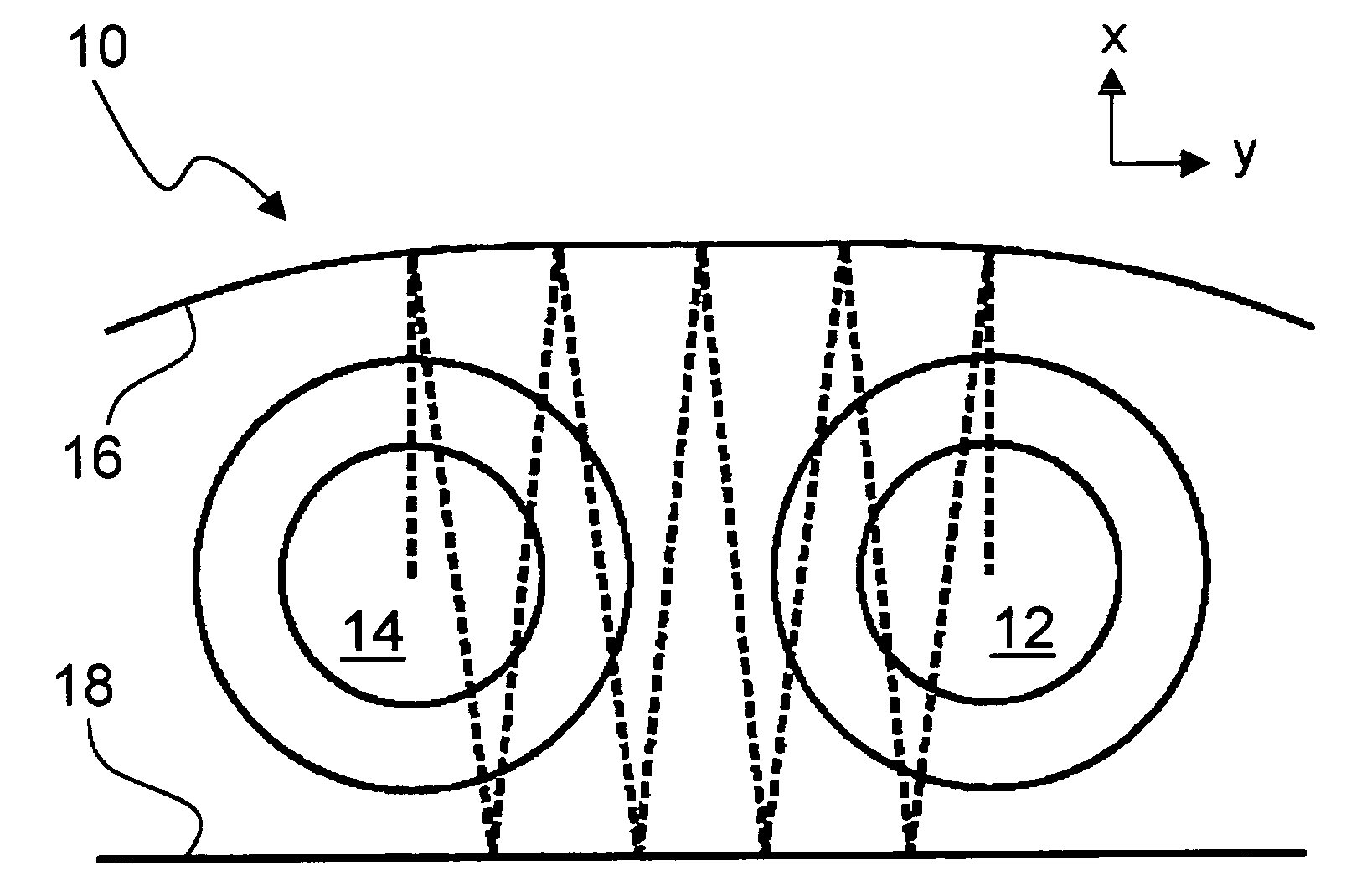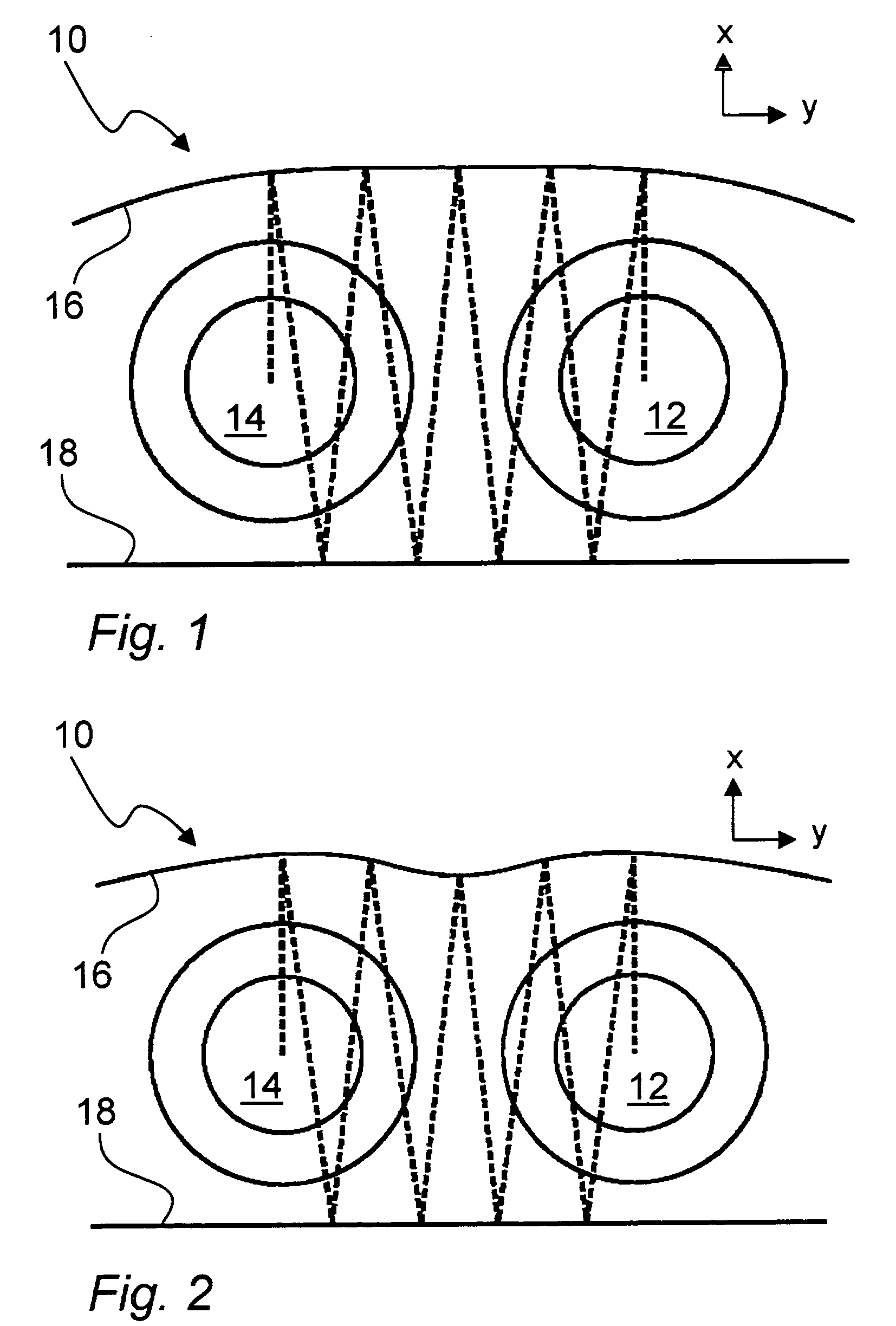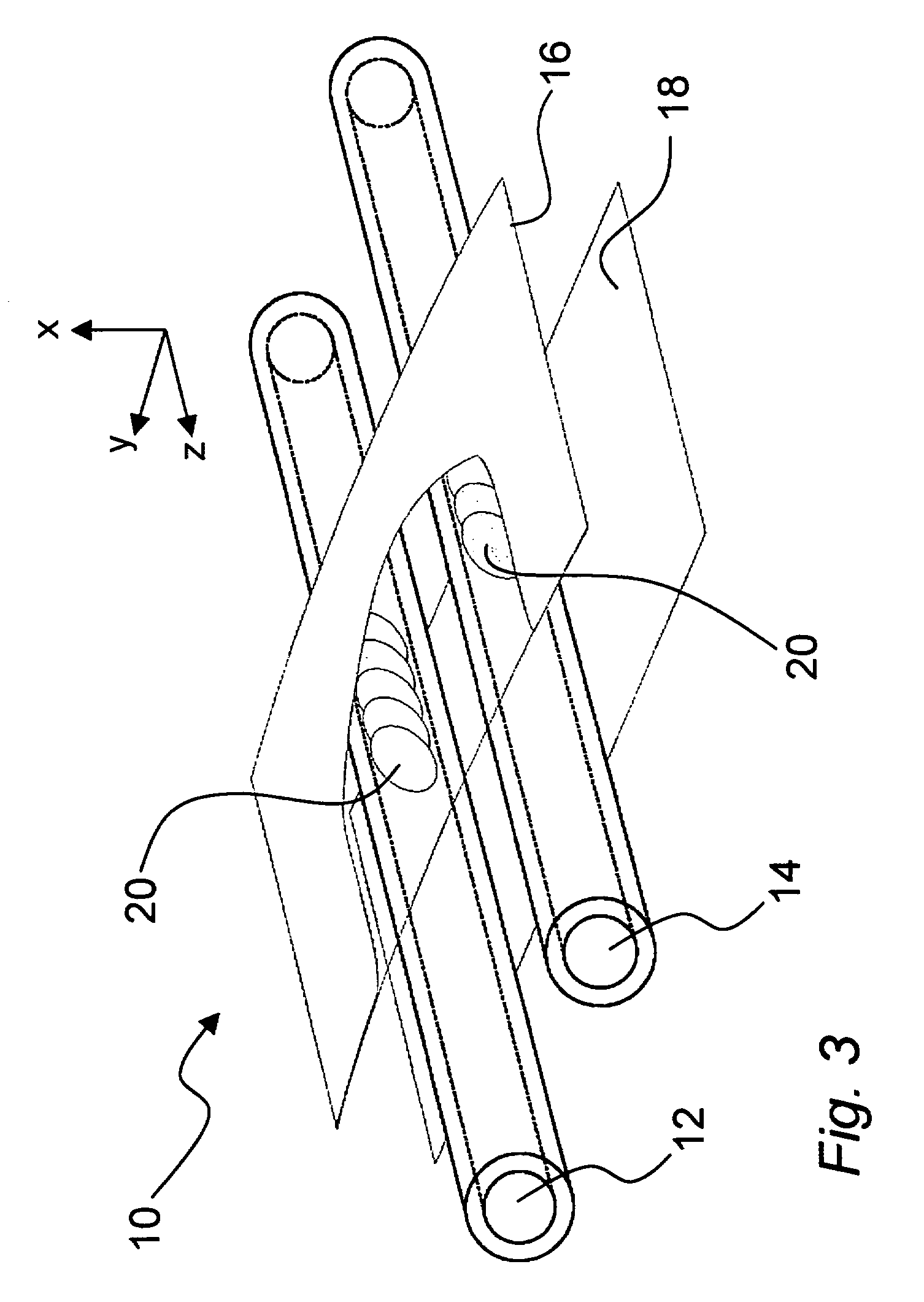[0018] Hence, the present invention is based upon an understanding that by selecting a well-defined, curved shape for at least one of the reflecting elements that constitute the external resonator or by providing suitable refractive portions or components, it is possible to create resonator
modes that may couple light to, or be excited from, a deflecting portion of a first waveguide and simultaneously be excited from, or couple light to, a deflecting portion of a second waveguide, wherein the waveguides define a geometrical plane substantially parallel to the resonator mirrors. Hence, according to the present invention, the
coupling between the waveguides is achieved while having the second waveguide positioned well outside the geometrical plane defined by the protruding lobes from deflecting portions of the first waveguide.
[0019] Thus, in coarse terms, the present invention proposes to couple light between waveguides by extracting light from the first waveguide in a first direction, generally perpendicular to the propagation direction for light within the waveguide, such that the extracted light enters a mode in the external resonator. The external resonator is designed such that the mode(s) have an extension in a lateral direction, being more or less perpendicular to both the first, extraction direction and to the propagation direction of light within the waveguide. Further, at least one mode of the external resonator overlaps with a corresponding
coupling portion of the second waveguide, said second waveguide being located adjacent the first waveguide. The
lateral extension of the (bound) mode in the external resonator is obtained by having at least one of the resonator mirrors appropriately curved or by incorporating refractive elements or portions in the external resonator. In this manner, it is not necessary for the two waveguides to be placed next to each other on a line going from one resonator mirror to the other (i.e. in the direction of the protruding light lobes).
[0020] Hence, the inventive design enables a new coupler geometry, wherein light is resonantly coupled out from the first waveguide and into a
resonator mode, said
resonator mode also overlapping with the second waveguide thereby enabling resonant coupling of light into said second waveguide. For the same FSR of the external resonator, the inventive geometry allows the waveguides (e.g. optical fibers) to be of twice the
diameter or size compared to the prior art.
[0023] The external resonator according to the present invention will typically exhibit several resonant
modes, meaning that the behavior and the wavelength characteristics will be more complex than if only one single mode were supported. However, it can be shown that it is possible to make all resonator
modes except one lossy. Thereby, although light from the deflecting portion of the first waveguide (
fiber) within a particular
wavelength range may excite such lossy
resonator mode, only a very small and in practice negligible amount of light will couple to the resonator mode, since the build-up of a
resonance is prevented by the losses.
[0024] Preferably, a blazed Bragg
grating is used for deflecting light out from the fiber core. It is particularly preferred to use an apodized, blazed Bragg
grating for this purpose. Such apodized
grating preferably has the properties of a
band pass filter approaching a tophat spectral characteristic. In the
spatial domain, such filter transforms into a sinc-like function. Normally, only a portion of the sinc-function is used, since it is often the desire to keep the length of the deflecting grating to a minimum. This may be accomplished by truncating the side lobes of the sinc-like function and weighing it with a
Kaiser window function. The use of an apodized Bragg grating provides good suppression of group
delay ripple for a wide
wavelength range.
[0026] Preferably, the separation between the reflecting elements of the external resonator is controllable, e.g. by means of electrostatic tuning. Improved tuning capabilities may be obtained for an embodiment in which at least one of the reflecting elements is divided into several reflective subsections, wherein each subsection is individually controllable with respect to the second, opposing reflective element of the resonator. In this manner, it is possible to control the efficiency of coupling from the first waveguide to the second waveguide, and to compensate for any imperfections in the shape of the resonator.
 Login to View More
Login to View More  Login to View More
Login to View More 


